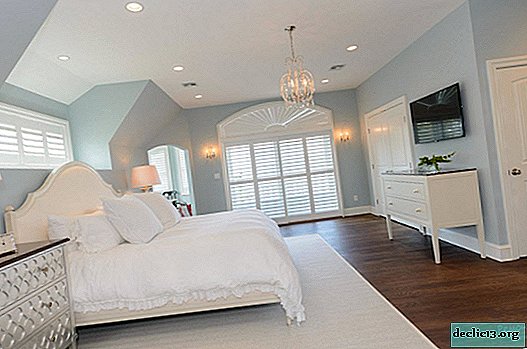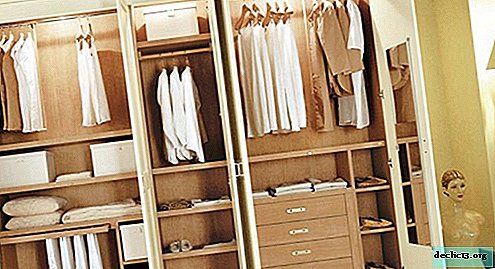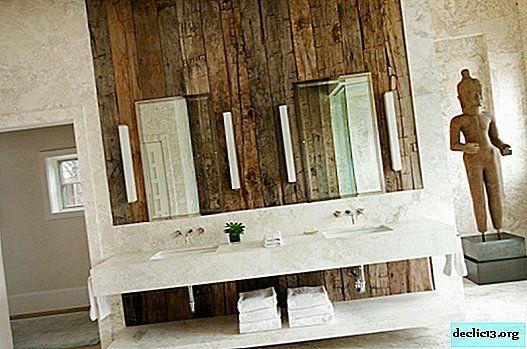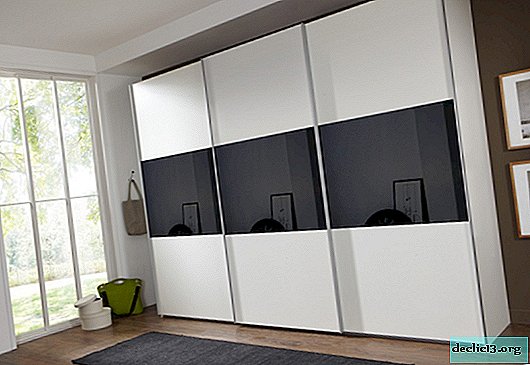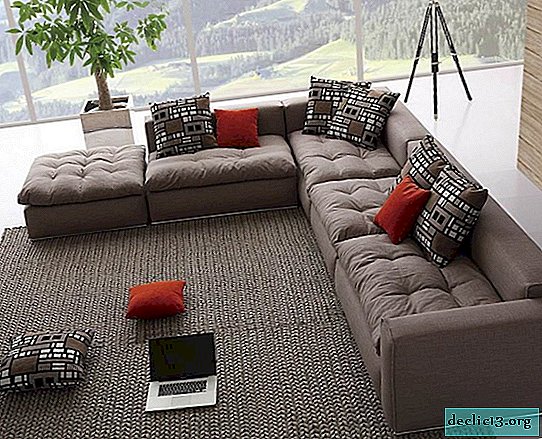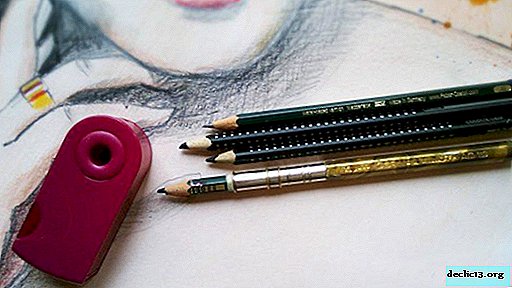Interior of a small living room: a kaleidoscope of illusions
Modern trends in the design of the living room are formed under the influence of changes in its functional role. Previously, they watched TV and dined in the hall, hosted large groups of guests, danced, and celebrated solemn dates. Now it is considered more convenient to organize collective festivities outside the home - in a cafe or restaurant. The living room is becoming more closed to prying eyes and casual visitors. Today's living room is a place of individual or family pastime, so it becomes more comfortable and corresponds to the true needs and tastes of its inhabitants, and not an "exhibit" exhibit to confirm the status of the owners. In small spaces, with the right approach, the living room, dining room, and even the study room are perfectly combined. Artistic style does not play a big role in the sense that you can choose the one you have long dreamed about and with which an understanding of the ideal interior is associated. The main thing is to create in the end a clean space that gives a feeling of spaciousness.
A small living room is not a reason for sad thoughts that square meters are not enough to realize interesting decisions and design fantasies. Quite the contrary. There are techniques that can visually expand the room.
7 optical illusions expanding the space of a small living room
As if by magic, you can change the hall without changing its real area. If you have a small living room, try a few visual tricks to make the space seem more voluminous, more lighted, higher, and everything will work out. It seems like magic, but in reality it’s science.
1. Make the space seem bigger than it really is
At the end of the XIX century. German scientist Hermann Ebbinghouse (1850-1909) explained how to achieve a change in perception of the size of an object using Titchener's theory of circles. The essence of the observation is that in the same circle the figure appears larger if it is surrounded by smaller circles, and smaller when the circles are much larger. Why is this happening? We perceive size depending on the elements that surround us (relative size). Therefore, so that a small space is perceived as large, furnish it with small-format furniture.
A set of furniture, accessories and decor items of small sizes evoke a feeling that the volume of the living room is larger than it actually is
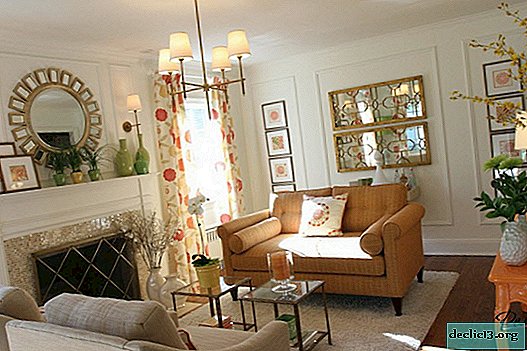
Also, please note that without optical focus, the living room, although equipped with comfortable seats, is poorly balanced. You can turn the sofa into the focal point of the living room by surrounding it with smaller seats. The living room will seem larger and much more pleasant to look at.
A long sofa in a narrow room is accented with the help of armchairs and coffee tables of smaller dimensions, which creates the impression of a larger room

Color is one of the main tools for visually expanding the space and providing light to all corners of the room. The problem of excesses extends to both color and texture, the glut of which negatively affects the perception of a clean and organized space. The dominant in small spaces should be beige, sand and all shades of white. To destroy the monotony, you can resort to bright acidic accents (in small doses) in the form of accessories - sofa cushions, rugs, curtains, linen, cotton, silk or shiny or matte organza covers. A large picture will visually reduce the room, a small one will increase it.
 White color can do real miracles with the perception of space, significantly expanding its volume
White color can do real miracles with the perception of space, significantly expanding its volume






2. Create a sense of perspective
To create depth, use the technique of the illusion of distance. The brain perceives peculiarly objects that are further away. They look better (some details disappear or blur). Why not use this illusion to enhance the living room perspective? It’s enough to decorate the wall or furniture that you want to “push aside” (to do further) in smooth and soft colors. And vice versa: to include textures in what you want to bring closer.
To enhance the perspective, do not leave a single piece of furniture so that it interferes with the overall perception of space. For the brain, empty space, like a cloudless sky, is associated with the distance. Therefore, it is also important to increase the visibility of going beyond the boundaries of the room. Leave free space in front of the windows and open the curtains so that your eyes do not meet obstacles and are sent, almost unconsciously, into the external environment.
 Windows without curtains are provided with free access, which solves several problems at once to increase space - huge streams of natural light, an open perspective into the external environment
Windows without curtains are provided with free access, which solves several problems at once to increase space - huge streams of natural light, an open perspective into the external environment


3. Change the space using horizontal and vertical rays
Peter Thompson, an expert in psychology of perception, speaking in 2008 at York University (UK), argued that the difference in perception of the size of the subject can create horizontal and vertical rays that stylize spaces and bodies. In 1860, this effect was already discovered by the German physicist German Helmholtz, who conducted experiments with the perception of squares. He took 2 squares of the same size, in which he drew parallel lines of the same width and dividing stripes inside. A square with horizontal lines was perceived higher and more stylish. As for the second square, it seemed that the vertical lines occupy a larger area.
Therefore, if you want the wall to appear higher, draw horizontal lines, if wider, draw vertical lines. If you read the opposite statement somewhere, then it is a fallacy. This has been proven by numerous experiments.
 Visual increase in area occurs due to the palace with stripes, which, depending on the point of view, are interpreted as vertical or horizontal. Accessories of a turquoise hue of blue color are associated at the subconscious level with the sky, sea space, freshness and purity
Visual increase in area occurs due to the palace with stripes, which, depending on the point of view, are interpreted as vertical or horizontal. Accessories of a turquoise hue of blue color are associated at the subconscious level with the sky, sea space, freshness and purity

Accessories and decor items (lamps, paintings, mirror frames) with pronounced vertical and horizontal components change the perception of the surrounding space.
 In the interior, windows, furniture, paintings, wall lights, a coffee table are selected with a pronounced horizontal component, which visually increases the volume of a small room
In the interior, windows, furniture, paintings, wall lights, a coffee table are selected with a pronounced horizontal component, which visually increases the volume of a small room

4. Choose furniture that takes up less space.
Proceeding with furniture should, of course, be done with general planning and understanding that if the room is small, you should not clutter it up too much - “extra” furniture will take up space and reduce the sense of volume. Each furniture candidate for placement is carefully selected for expediency and necessity.
The glass table from Isamu Noguchi not only decorates, but also organizes the interior - along each side of the triangle there is a sofa and comfortable chairs. In the living room - only the most necessary pieces of furniture, which makes it free and stylish

Today's furniture market offers a wide selection of versatile and multifunctional furnishings of small size and excellent design. Modern furniture designers offer many transformer designs that can be used in a variety of ways, easy to clean, or position as needed. For example, in a small room it would be ideal to provide only two objects - a single table that would serve as a writing desk, and a dining room, and a sofa turning into a bed, quickly sliding apart and folding.
 A sofa that, with the help of the original mechanical design, easily increases its usable area, due to which it can take many more guests into its soft arms than it seems at first glance
A sofa that, with the help of the original mechanical design, easily increases its usable area, due to which it can take many more guests into its soft arms than it seems at first glance


Furniture is arranged in such a way that there is more free space. Several elegant folding chairs can be placed behind the closed facades of the built-in wardrobes and removed as needed.
The built-in bookcase significantly saves the living space, the coffee table can serve as a seat and hidden storage for various things that should not be constantly visible

It is impossible to imagine a comfortable living room without comfortable armchairs, placed opposite the video system or next to the fireplace. To achieve greater order, experiment with pairs of pieces of furniture located on both sides of an imaginary axis of symmetry.
 The imaginary axis of symmetry runs vertically between the windows with a fireplace and a picture in a rectangular frame. Windows, book shelves, comfortable recliners with sofa cushions, arranged symmetrically, create a sense of harmony, order and spaciousness
The imaginary axis of symmetry runs vertically between the windows with a fireplace and a picture in a rectangular frame. Windows, book shelves, comfortable recliners with sofa cushions, arranged symmetrically, create a sense of harmony, order and spaciousness



The vertical line seems a third longer than the horizontal of the same size. What is this illusion based on? On eye movement. According to the German psychologist Wilhelm Maximilian Wundt, horizontal visual passage is easier and faster, and vertically causes effort and therefore is slower. A horizontal shelf appears to be shorter (and “occupies” less space) than a vertical one.
Horizontal racks visually reduce the occupied space, thereby creating the impression of a spacious room

5. Achieve increased light
With a lot of light, the room is perceived as more lively and energetic, and at the same time larger.
If you play with contrast and shadow, you can increase the illumination, without adding light. Light will be perceived lighter and brighter, just paint the surrounding areas. This was demonstrated by optics professor Edward Adelson with his theory of contrast clarity. The lesson is simple: the light source produces more light with the addition of a certain amount of shadow.
To apply this effect to the room, you can paint the window wooden parts in white and the slopes in dark. Thus, the light passing through the window is amplified and intensified by the shadow frame.
 The light becomes brighter as it passes through dark-framed windows. The effect is enhanced by alternating black and white stripes on the curtain fabric. The glass transparent table reflects the natural and artificial light from the chandelier. Carefully selected details, mutually matching with each other, surprisingly do not clutter up the space, but, on the contrary, make it expressive and harmonious
The light becomes brighter as it passes through dark-framed windows. The effect is enhanced by alternating black and white stripes on the curtain fabric. The glass transparent table reflects the natural and artificial light from the chandelier. Carefully selected details, mutually matching with each other, surprisingly do not clutter up the space, but, on the contrary, make it expressive and harmonious


One of the simplest and at the same time magical tricks to decorate a small room and make it visually large and bright is the use of mirrors in the interior. To make the small room more spacious, you can put mirrors on opposite walls. They, reflecting natural and artificial light, visually enlarge the room. Mirrored walls are suitable for a huge number of styles and are an element of decor. Ideal for decorating bare walls.
 There is never much light. In the interior, the illumination system includes natural light passing through wide windows, ceiling, wall and floor lamps, glazed doors that allow light to penetrate from an adjacent room, and a mirror in which light flows from various sources
There is never much light. In the interior, the illumination system includes natural light passing through wide windows, ceiling, wall and floor lamps, glazed doors that allow light to penetrate from an adjacent room, and a mirror in which light flows from various sources


6. Separate the space without dividers
In order for space to be perceived as organized and spacious, the illusion of the Kaniss triangle can be used. An Italian psychologist at the beginning of the twentieth century discovered that if you put furniture at each vertex of the corner with an imaginary triangle (or square, rectangle) in your room, the brain will unknowingly close the geometric figure, and you can separate the living room area from the study corner or dining room without establishing any real dividers (which always reduce space).
 The Kannis triangle in the living room interior allows you to "divide" the limited space into 3 conventional zones - "home library", "music salon" and "study")
The Kannis triangle in the living room interior allows you to "divide" the limited space into 3 conventional zones - "home library", "music salon" and "study")


7. Show a sense of proportion in the decoration
Some mishmash of wall decorations can create a mess in the room. You should review the collections on display and showcase your favorite ones instead of completely covering the walls and filling the shelves with works of art. Eyes cannot concentrate on anything, and the impression of disorder and disorganization is created. In living room decoration, less is really more.
 The exhibited collection of paintings and photographs may change from time to time and create a new mood in the living room
The exhibited collection of paintings and photographs may change from time to time and create a new mood in the living room



Finally, we got to an optimistic conclusion - the main thing for the room is not size. Create your own unique style with the help of tips from the best interior designers, and your living room will be transformed.






